Weather Updates, Firefly Aerospace Alpha rocket launch
Posted: 4 July 2024
After midnight on Monday, 24 June 2024, we had a long lasting thunderstorm come through with lots of very bright lightning, loud thunder, and heavy rain at times (storm total 0.41"). Monsoon Season (15 June to 30 September) has definitely started. Tuesday, 25 June, and Wednesday, 26 June, were mostly cloudy. Thursday mid-morning, 27 June, there was a waning gibbous Moon occultation of Saturn that would have been visible in the western sky from Cassiopeia Observatory, but a mostly cloudy sky prevented observing it. Friday, 28 June, there were thunderstorms in the area. Due to thunderstorms to the west after sunset, I was not able to observe the SpaceX Falcon 9 rocket launch from California. Saturday, 29 June, the same weather pattern continued. Late Sunday afternoon, 30 June, a thunderstorm came through with wind, rain (0.7"), and lightning. As a Trained Weather Spotter for the National Weather Service, I reported the rainfall rate to the Tucson office of the National Weather Service. About two minutes later they issued a Flood Warning for my area.
Monday, 1 July, was mostly cloudy with thundershowers in the area. That night the western sky was clear enough to have seen the launch of the Firefly Aerospace Alpha rocket from Vandenberg Space Force Base in California. Unfortunately, two launch aborts and a subsequent scrub cancelled the opportunity. Tuesday afternoon, 2 July, there were some brief thunderstorms in the area, resulting a pretty sunset, as seen in this iPad Pro photo.
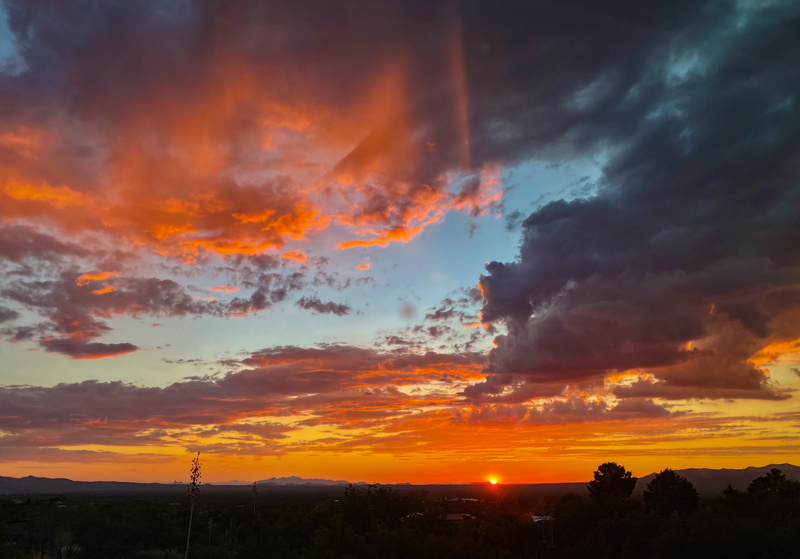
Wednesday, 3 July, was mostly clear as Monsoon Season took a break.
|
Open: Wednesday, 3 July 2024, 1813 MST Temperature: 89°F |
Session: 1990 Conditions: Mostly clear |
Equipment:
12" f/8 LX600 w/StarLock
2" 24mm UWA eyepiece
12x50 binoculars
Camera:
iPhone 15 Pro Max
1819 MST: Dome Cover OFF.
SYNCed the observatory clock to WWV time signals. Then prepared the D850 DSLR for imaging later. I followed that by doing some minor dome maintenance for a few minutes.
1838-1910 MST: Relaxed on the observatory patio bench.
1911 MST: LX600 ON, StarLock OFF, High Precision OFF.
Tried to view Venus, very low in the western sky, but it was behind a tree. Also tried to view Mercury, also low in the western sky, but it was not visible in the bright sky.
1915 MST: Returned to the bench while waiting for the Sun to set.
1931 MST: Took this iPhone 15 Pro Max photo of a storm to the southwest, Camera app (5X lens).
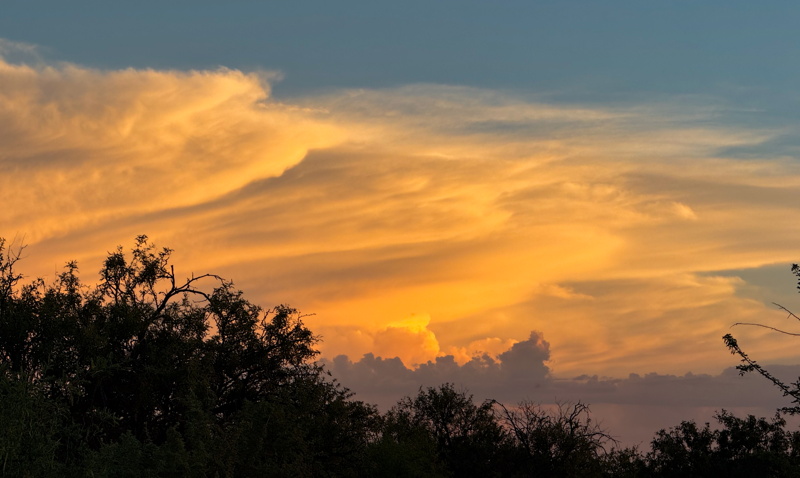
1938 MST: Sunset.
1951 MST: Saw this tarantula who came to visit.
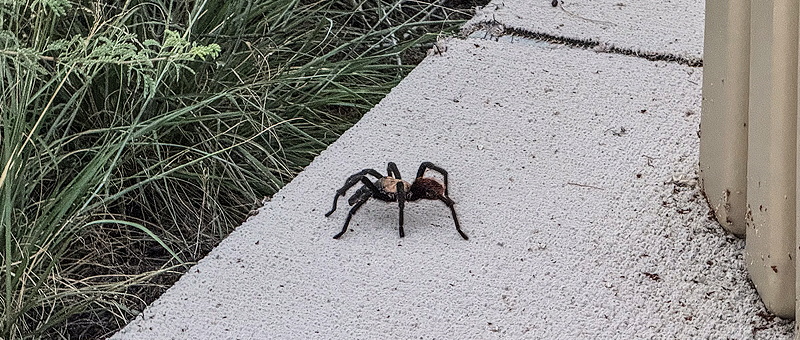
1956 MST: Checked whether Mercury was visible in the telescope. It was now behind a tree.
2001 MST: Slewed to Comet 13P/Olbers, Mag. +7.5. It was not yet visible in the bright northwestern twilight sky. Mounted the D850 DSLR at prime focus + focal reducer in the hope I would be able to image the comet before it was too low in the sky. The comet was not yet visible in the camera or 12x50 binoculars.
Relaxed on the bench while waiting for the sky to get darker.
2030-2040 MST: Tried to observe Comet 13P/Olbers, 12x50 binoculars, but was unsuccessful at seeing it in the twilight sky. It was now behind a tree from the observatory.
2050 MST: Clouds in the southern sky was getting higher in the sky. I moved to a higher elevation in order to watch the launch of the Firefly Aerospace Alpha rocket from Vandenberg Space Force Base in California.
2102 MST: Spotted Comet 13P/Olbers, 12x50 binoculars, low in the northwestern sky. There was a faint coma visible, but no tail.
2104 MST: the Firefly Aerospace Alpha rocket was launched. Here are some handheld iPhone 15 Pro Max photos taken with the Camera app (Night Mode, 3 seconds, 2X and 1X lens). I adjusted some of the exposures to better show the 1st stage exhaust plume. The red glow in the last photos are from the ionosphere being penetrated.
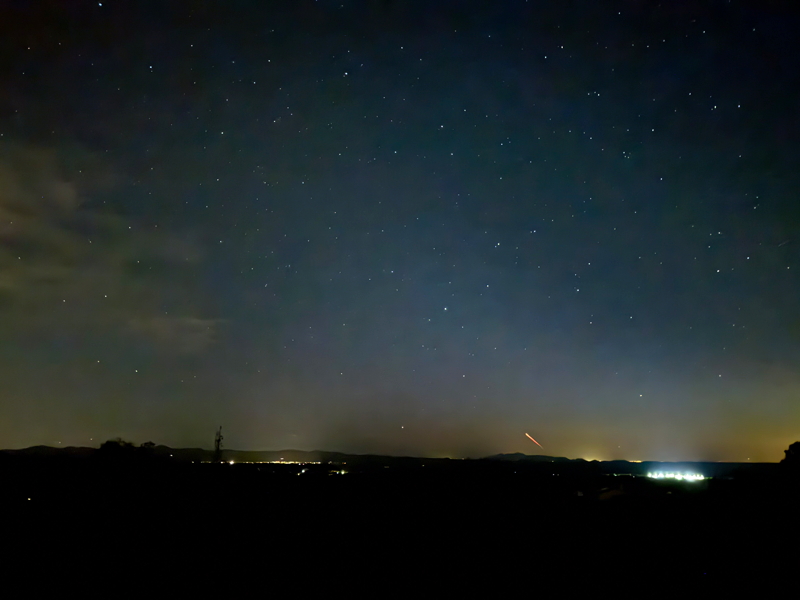
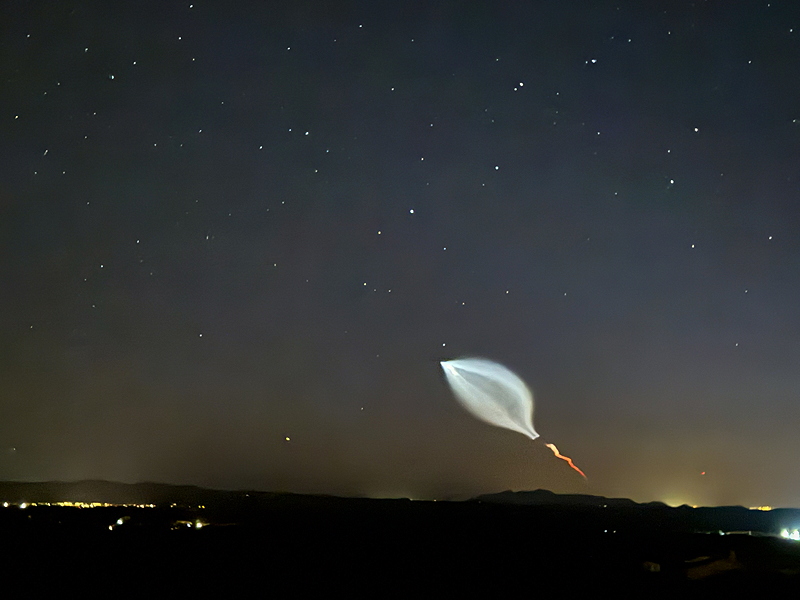
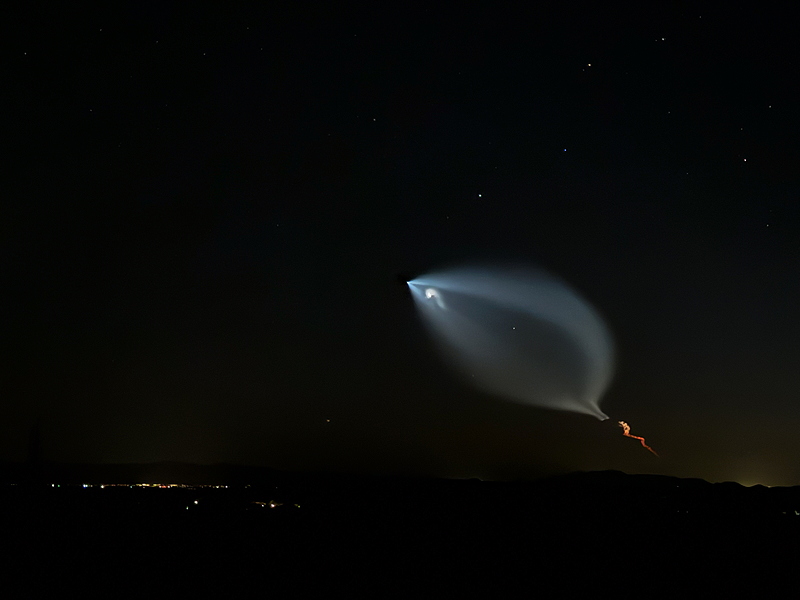
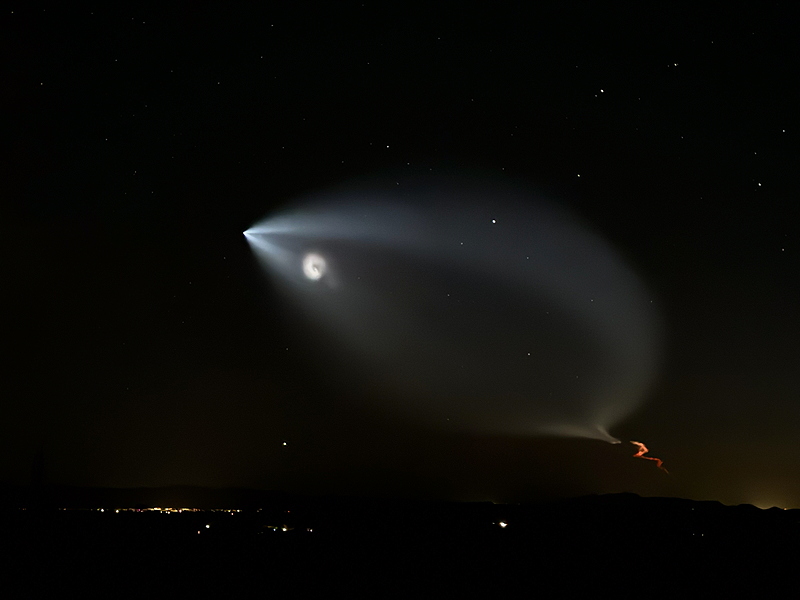
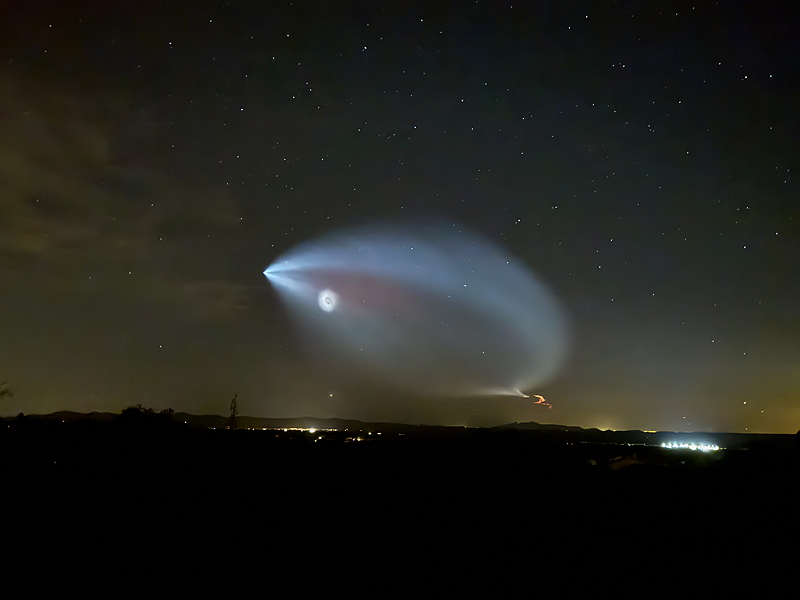
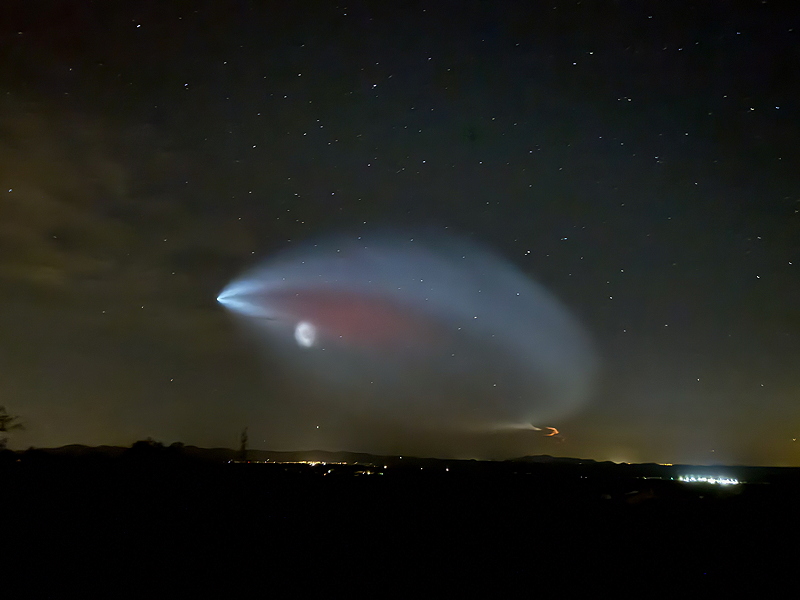
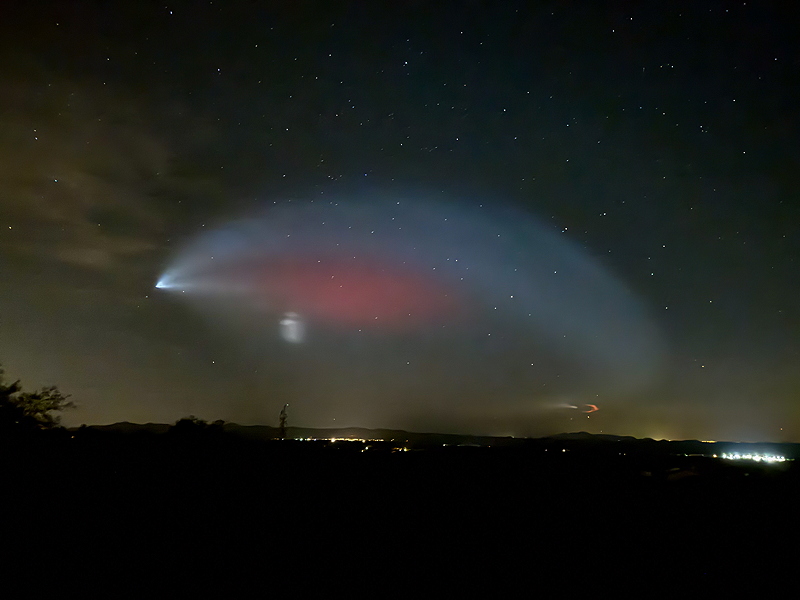
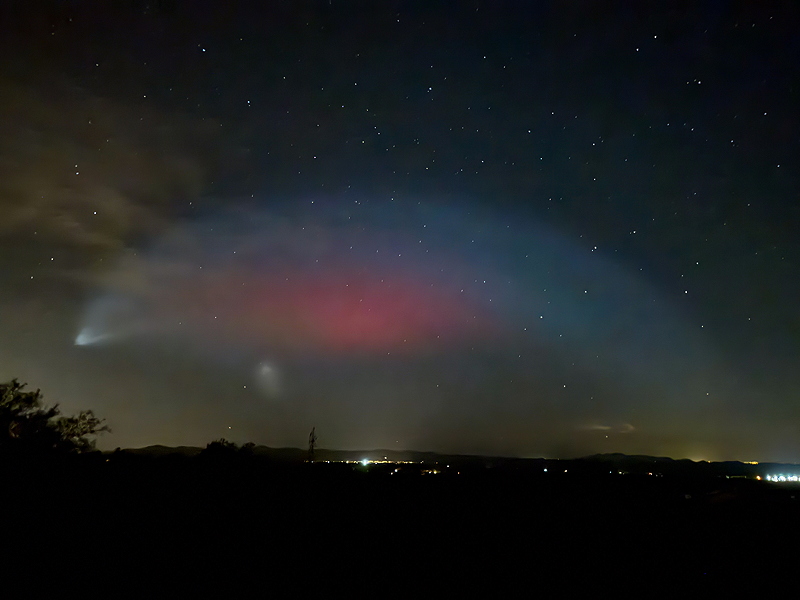
2115 MST: Back in the observatory. Due to clouds, I decided to end this session. Although I didn't get to do all that I hoped, it was nice to be back in the observatory after a two-week break due to weather.
2133 MST: LX600 OFF.
|
Close: Wednesday, 3 July 2024, 2142 MST Temperature: 81°F |
Session Length: 3h 29m Conditions: Partly cloudy |
I have updated my POD Roller Desk article.
Comments are welcome using Email. Please read the Email Etiquette guidance.
Cassiopeia Observatory Home Page
Copyright ©2024 Michael L. Weasner / mweasner@mac.com.
URL = http://www.weasner.com/co/Reports/2024/07/04/index.html
